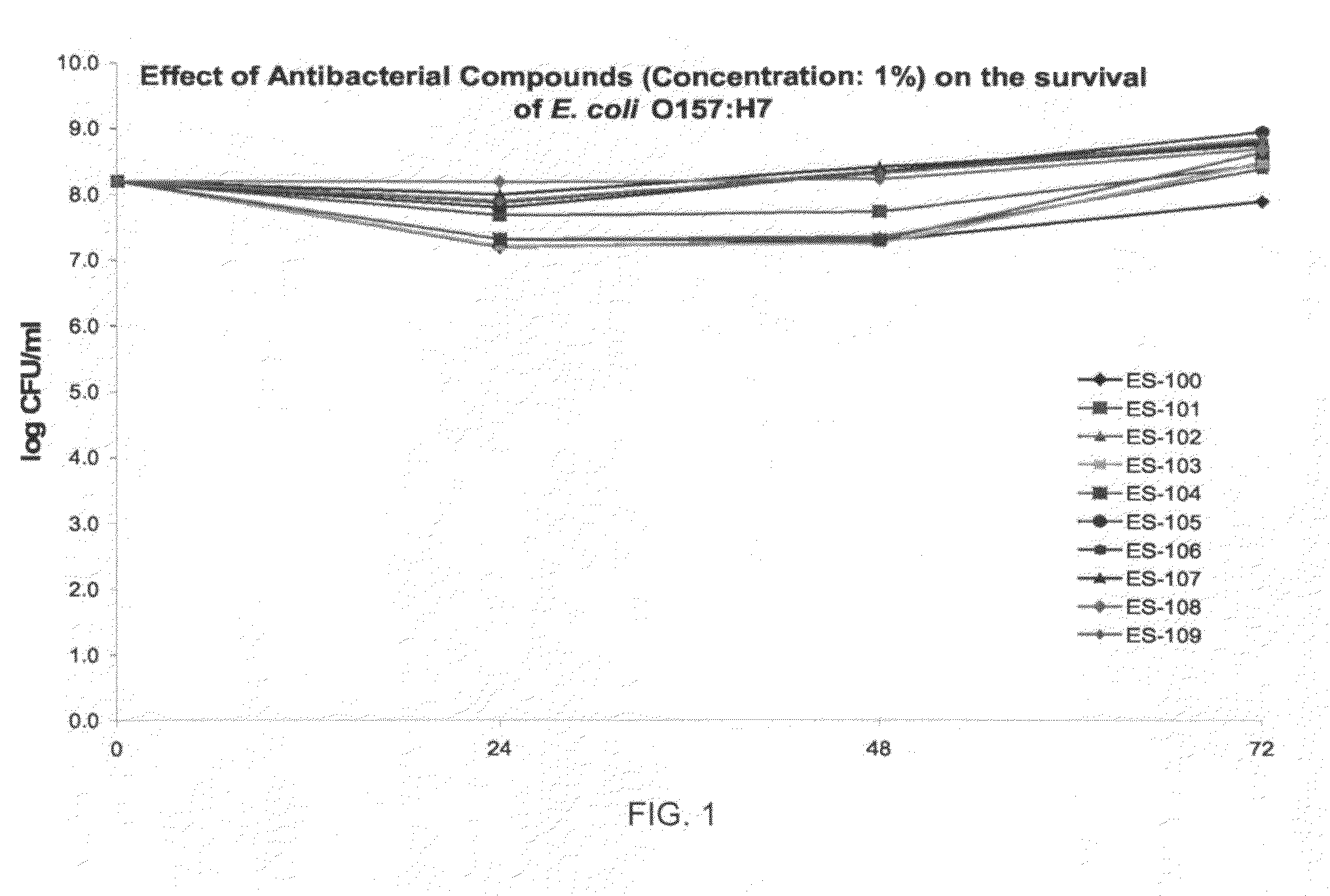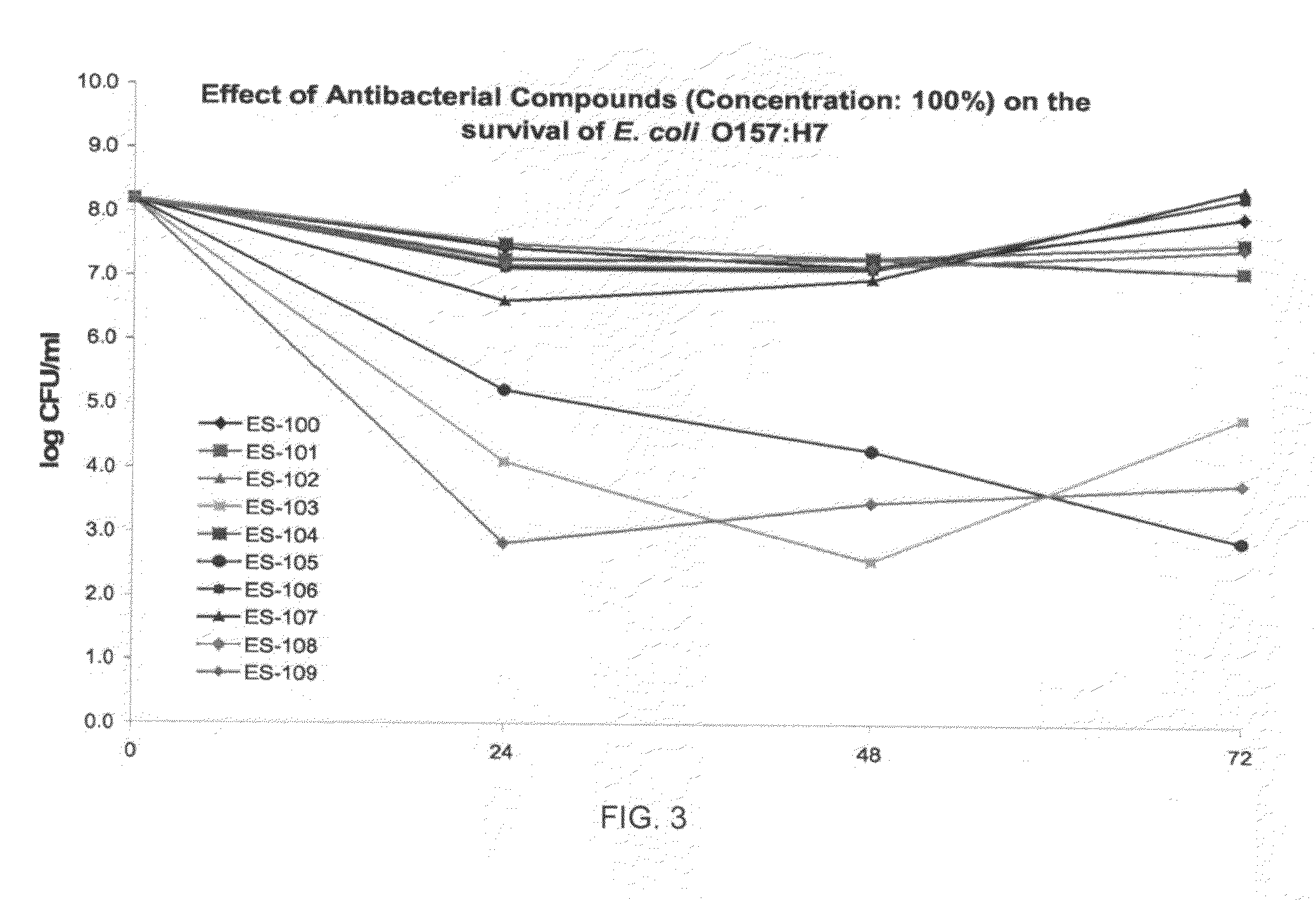Antiviral and antibacterial activity from medicinal mushrooms
- Summary
- Abstract
- Description
- Claims
- Application Information
AI Technical Summary
Benefits of technology
Problems solved by technology
Method used
Image
Examples
example 1
[0049]Tissue cultures of the mushrooms species describe herein were acquired or cloned from wild specimens by the inventor and purified over time by successive transfers in a clean room laboratory using standard tissue culture techniques as described in Growing Gourmet and Medicinal Mushrooms Stamets (1993, 2000). Fomitopsis officinalis I is a strain collected from Morton, Washington, USA. Fomitopsis officinalis X is a strain isolated from the Hoh Rainforest, Washington, USA. Other species were either collected or obtained from culture banks. The Ganoderma resinaceum utilized is a strain formerly misidentified as G. lucidum. Phylogenetic analysis of Ganoderma based on nearly complete mitochondrial small-subunit ribosomal DNA sequences, Soon Gyu Hong and Hack Sung Jung, Mycologia, 96(4), 2004, pp. 742-745.
[0050]Mycelial cultures were grown in sterile Petri dishes containing sterilized malt yeast rice agar. After three weeks of colonization in a clean room laboratory, the cultures wer...
example 2
[0053]Proprietary strains of fungal species, sourced and / or originated by Stamets and Fungi Perfecti LLC, were grown under Class 100 clean room conditions on sterilized, certified organic short grain brown rice, in accordance to methods described by Stamets (1993, 2000) in Growing Gourmet and Medicinal Mushrooms. The moistened rice was sterilized in high-density polypropylene bags and inoculated with mycelium, which was fermented in liquid culture for several days. Each strain was grown to optimize the number of cell divisions (CFU's=colony forming units) prior to transfer into grain. Once inoculated, each strain was incubated for a duration to optimize their CFU (colony forming units) maxima, and then flash frozen to −18° C. The frozen myceliated rice was then freeze-dried in a negative pressure vacuum of 1500-2000 millibars and then heated to 75° C. for 24 hours. The freeze-dried material was then milled to a fineness of 20-80 standard mesh (180-850 microns). This raw material can...
example 3
[0054]The general approach for determining antiviral activity and toxicity as described by E. Kern for orthopoxviruses (http: / / www.niaid-aacf.org / protocols / orthopox.htm) was utilized. The Selectivity Index (SI) values were determined by or under the direction of Dr. Earl Kern of the USAMRIID / NIH / USAID Bioshield BioDefense Program.
[0055]An inexpensive, rapid assay such as a CPE-inhibition assay that is semi-automated was used initially to screen out the negatives. Screening assays were conducted in low-passaged human cells. Each assay system contained a positive control (CDV) and a negative control (ACV). Toxicity was determined using both resting and proliferating human fibroblast cells.
[0056]Screening Assay Systems for Determining Antiviral Activity Against VV and CV
[0057]Compounds were screened for activity against Vaccinia virus (VV) and Cowpox virus (CV) using the CPE assay in HFF cells. The screening assay systems utilized were selected to show specific inhibition of a biologic...
PUM
 Login to View More
Login to View More Abstract
Description
Claims
Application Information
 Login to View More
Login to View More - R&D
- Intellectual Property
- Life Sciences
- Materials
- Tech Scout
- Unparalleled Data Quality
- Higher Quality Content
- 60% Fewer Hallucinations
Browse by: Latest US Patents, China's latest patents, Technical Efficacy Thesaurus, Application Domain, Technology Topic, Popular Technical Reports.
© 2025 PatSnap. All rights reserved.Legal|Privacy policy|Modern Slavery Act Transparency Statement|Sitemap|About US| Contact US: help@patsnap.com



